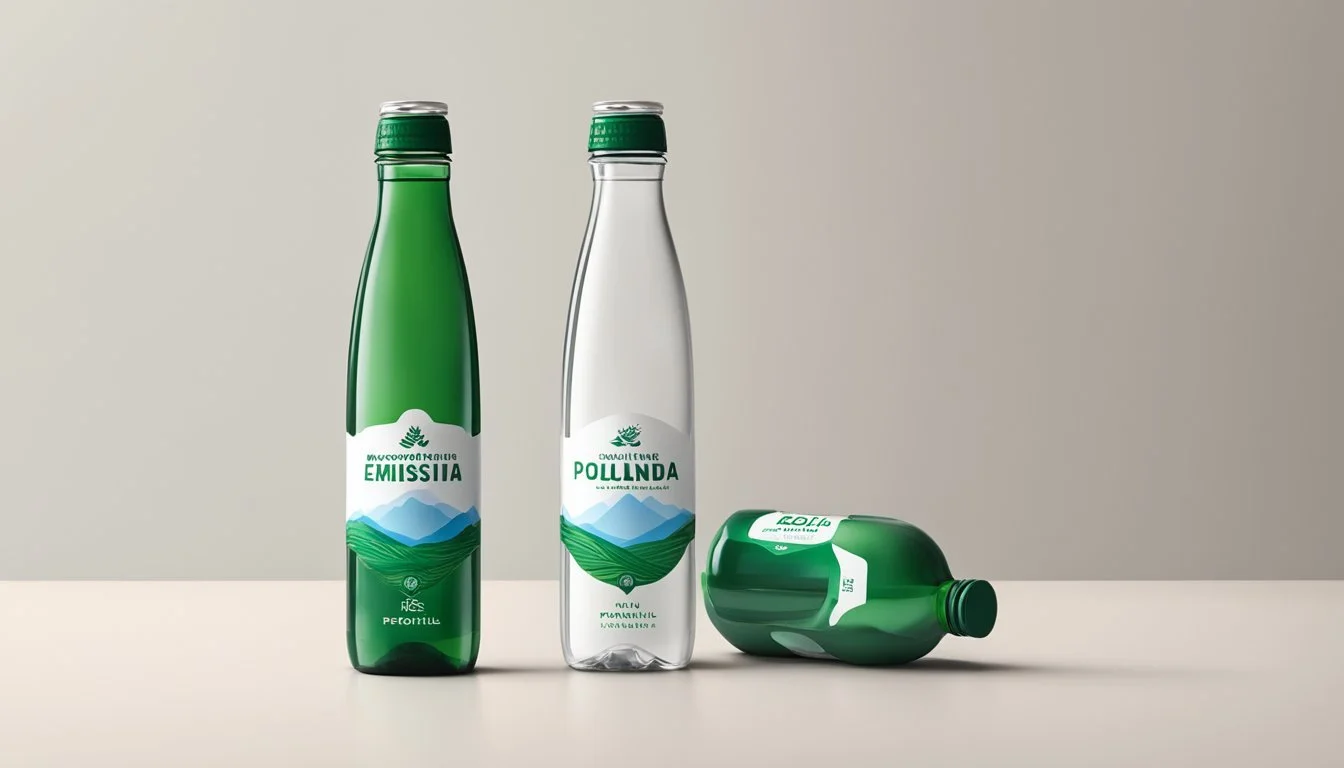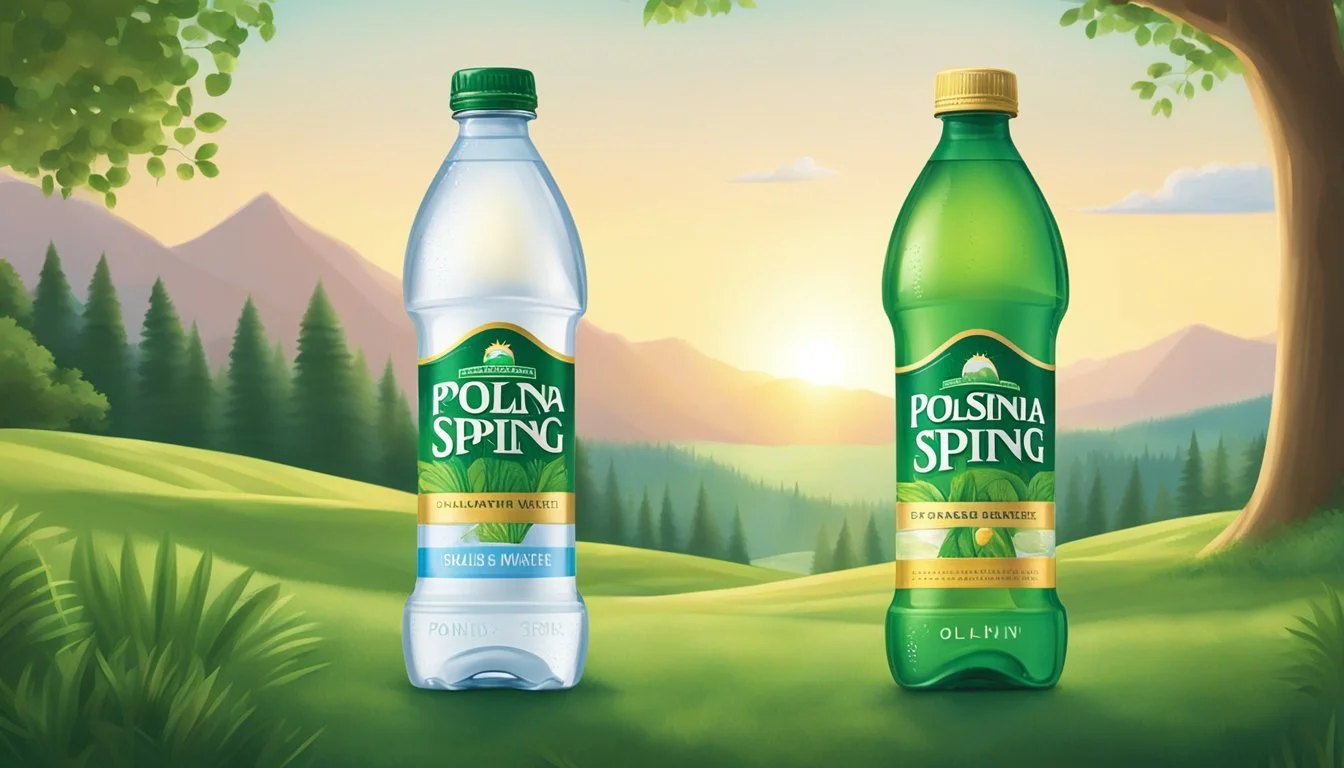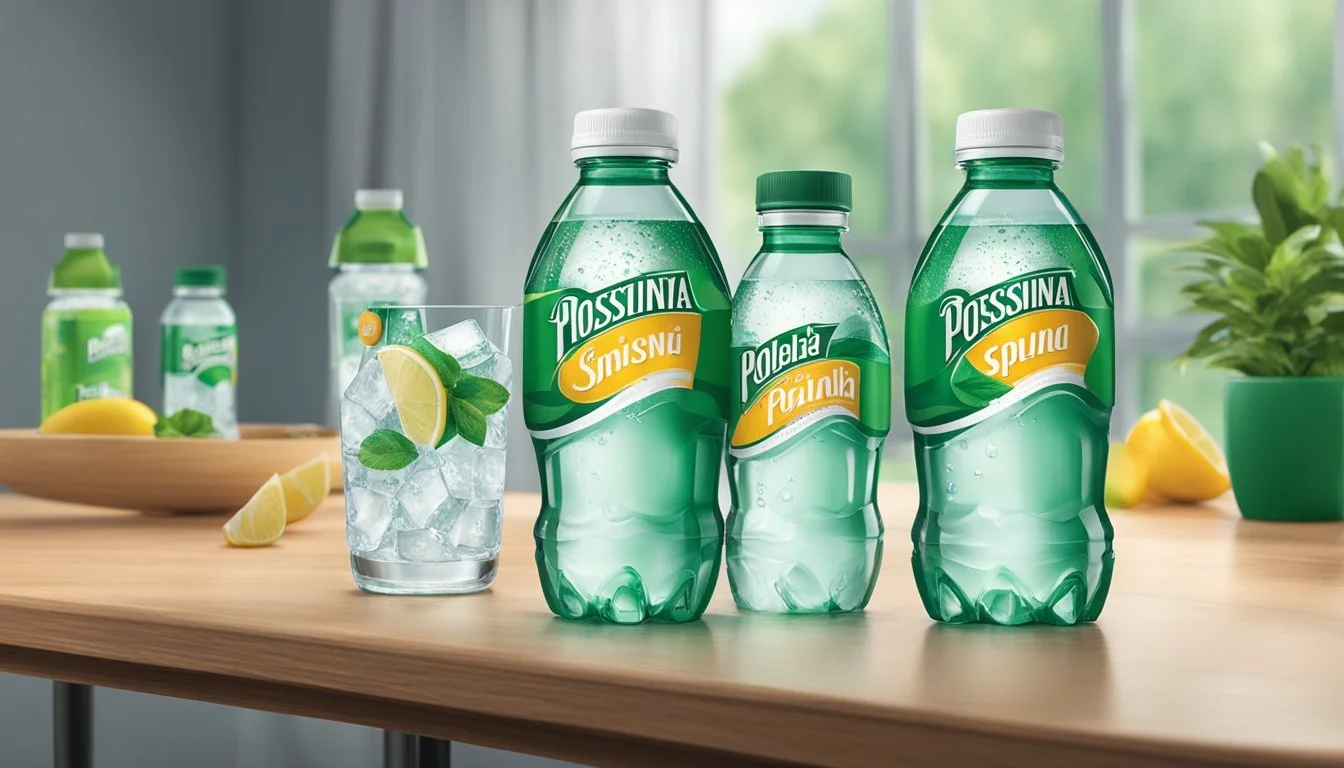Essentia vs. Poland Spring
Unveiling the Superior Bottled Water Choice
In the expanding world of bottled water, consumers are faced with a plethora of choices, each brand claiming superiority over its competitors. Among these, Essentia and Poland Spring stand out—but for quite different reasons. Essentia is known for its high pH level of 9.5, offering an alkaline water that is not only free from acidity but also boasts a blend of electrolytes and minerals intended to deliver a smoother taste and better hydration.
On the other hand, Poland Spring has built its reputation on the promise of natural spring water sourced from Maine. It is appreciated for its taste and the brand's commitment to providing naturally sourced water. However, despite its regional affinity and wide availability, Poland Spring is sometimes considered a more cost-effective option that does not particularly stand out in the crowded market of bottled waters.
While considering which bottled water is better, it is important to assess factors such as taste, source, and the potential health benefits provided by their respective compositions. With Essentia's emphasis on alkalinity and Poland Spring's focus on natural sourcing, the decision is not simply about quenching thirst—it's about the value each brand adds to the simple act of drinking water.
History and Origin
When considering bottled water, understanding the history and origin of the brands in question provides insight into their legacy and processes. Each company’s unique background contributes to its current market position and consumer perception.
Poland Spring History
Poland Spring originated in Maine and boasts a long-standing history dating back to the 1800s. Originally sourced from a natural spring in the small town of Poland, Maine, it has developed into one of the most recognized bottled water brands in the United States. The brand claims that its water is still sourced from multiple springs located in Maine, ensuring that the original integrity and purity of the water are maintained.
Essentia History
Essentia is known for its ionized alkaline water, which it promotes as offering health benefits due to a higher pH level. Founded in 1998, Essentia purifies its water via a process they call Hydro-7. This proprietary method includes microfiltration, reverse osmosis, and ultraviolet exposure, which culminate in the water being ionized. Essentia's thorough filtration process seeks to provide a distinct, clean taste and a product that supports better hydration.
Source and Production Process
Essentia and Poland Spring bottled waters originate from different sources and undergo unique production processes. This section will detail these aspects, providing clarity on what sets each brand apart.
Spring Water Sources
Essentia water does not come from a spring but instead sources its water from publicly available water systems. It is then purified and enhanced, providing a consistent source that is not dependent on natural spring variability. In contrast, Poland Spring claims its water is sourced from multiple springs in Maine, including but not limited to clear mountain springs, each purportedly providing natural filtration through layers of sediment.
Poland Spring sources: Multiple springs, Maine
Essentia sources: Public water systems
Purification and Enhancement
Both brands undertake extensive purification processes; however, they employ different methodologies to enhance their water. Essentia water undergoes a microfiltration process, reverse osmosis, and is then enhanced with electrolytes for taste. They further raise the pH level to create alkaline water with a 9.5 or higher pH, aimed at delivering health benefits associated with alkaline diets.
Poland Spring, on the other hand, maintains that their spring water is naturally filtered but also uses processes to ensure it meets regulatory standards. They have yet not publicly detailed the use of advanced techniques such as electrolyte enhancement or pH adjustment, focusing instead on the natural purity of their confined aquifer sources.
Essentia purification: Microfiltration, Reverse osmosis
Poland Spring purification: Natural filtration, Regulatory standard processes
Enhancements:
Essentia: Electrolytes, pH level > 9.5
Poland Spring: None specified
While both brands aim for purity and taste, Essentia's process is decidedly more engineered, enhancing its water to achieve specific alkalinity and mineral content goals. Contrarily, Poland Spring emphasizes the natural aspects of their spring water, relying on their sources' geological filtration.
Health and Nutritional Content
When comparing Essentia and Poland Spring bottled waters, it's essential to consider their health and nutritional content, specifically focusing on aspects such as pH and alkalinity, and the types and amounts of minerals and electrolytes present.
pH and Alkalinity
Essentia:
Essentia bottled water is known for its high pH level, typically averaging 9.5 on the pH scale, which classifies it as alkaline water. Alkaline water is characterized by containing bicarbonates and minerals and is believed by some to help in neutralizing acidity in the body, although scientific consensus on these health benefits is not definitive.
Poland Spring:
Poland Spring is natural spring water and typically has a neutral pH that closely mimics that of pure water, with a value around 7.0. The pH level of Poland Spring reflects that it does not specifically aim for high alkalinity as a selling point.
Mineral and Electrolyte Content
Essentia:
Essentia water goes through a purification process that removes most of the impurities and then adds back a blend of electrolytes for taste. These electrolytes include sodium bicarbonate, dipotassium phosphate, magnesium sulfate, and calcium chloride, which contribute to the taste as well as to hydration.
Poland Spring:
Poland Spring water comes from multiple spring sources in Maine and naturally contains various minerals. Some of the key electrolytes and minerals present in Poland Spring water include calcium, magnesium, and bicarbonate. The mineral content contributes not only to its taste but also to the hydration and health benefits of the water, as these minerals are essential for many body functions.
Both brands offer distinct advantages in terms of health and nutritional content. While Essentia provides a high pH level and added electrolytes for those seeking alkaline water, Poland Spring offers a natural mineral profile from its spring sources.
Taste and Consumer Preferences
When comparing Essentia and Poland Spring, it's important to address the taste profiles that resonate with consumers, as well as public perceptions shaped by brand loyalty and marketing efforts.
Blind Taste Tests
In blind taste tests, where the brand is not disclosed to the participant, Essentia tends to be notable for its smooth and clean taste due to its ionization process, which also results in a higher pH level. On the other hand, Poland Spring, classified as spring water, is often recognized for its natural and crisp taste that many associate with its spring source. Other brands like Evian and Fiji are also participants in such taste tests and are known for their unique mineral profiles, with Evian being rich in minerals from the French Alps and Fiji being distinguished by its silica content. Aquafina, a purified water brand, typically ranks differently due to its lack of distinct taste that results from its purification process.
Brand Loyalties and Perceptions
Brand loyalty plays a significant role in consumer preference, with marketing efforts and brand identity influencing perception. Poland Spring leverages its image as a natural spring water sourced from Maine, which resonates with consumers seeking a pure and unaltered water source. Essentia, in contrast, promotes its ionization process and alkaline level, attracting health-conscious individuals aiming for added hydration benefits. Although not compared directly to Essentia or Poland Spring, brands such as Voss capitalize on their sleek packaging and Norwegian origins, while Fiji emphasizes its volcanic filtration process. Reports from organizations like Consumer Reports help shape consumer opinions by providing objective assessments of taste and quality, guiding the marketplace away from subjective brand narratives and towards informed choices based on product attributes.
Environmental Impact
When considering the environmental impact of bottled water brands such as Essentia and Poland Spring, it's crucial to examine both the sustainability of the water sources they use and the materials and waste associated with their product packaging.
Bottle Materials and Waste
Essentia typically uses plastic bottles, which, while convenient, have significant environmental drawbacks. These bottles are often made from polyethylene terephthalate (PET), which is derived from petroleum. While PET bottles are recyclable, not all end up being recycled, contributing to landfill waste and potential pollution.
In contrast, Poland Spring announced initiatives to transition to more eco-friendly packaging. They have introduced bottles made from 100% recycled plastic for some of their products. They also offer water in glass bottles, which have a higher recycling rate than plastic, though glass production does involve mineral extraction and significant energy consumption.
Material Recycling Rate Environmental Consideration PET Plastic Bottles Lower than glass Petroleum-based, often not recycled Glass Bottles Higher than plastic More energy-intensive to produce
Water Source Sustainability
The sustainability of a water brand often depends on the management of its water source. Essentia sources water nationally and uses an ionization process, which doesn't draw from unique natural reserves. However, the brand needs to manage its groundwater sustainably to ensure it does not deplete local sources or impact ecosystems adversely.
Poland Spring, on the other hand, harvests spring water predominantly from Maine. The brand has faced scrutiny over the sustainability of its sources, but maintains its commitment to responsible stewardship of these natural springs. This aspect is vital as they extract water that naturally replenishes, but must be carefully balanced to avoid over-extraction that could damage the ecosystem.
Comparatively, brands like Fiji Natural Artesian Water and Icelandic Glacial emphasize their exotic sources, contributing to perceived value but also potentially increased environmental costs due to transportation from remote locations like Fiji and Iceland to consumers worldwide.
It's important to note that despite measures taken by bottled water companies to improve sustainability, the environmental impact of transporting bottled water, whether from California, Maine, or overseas locations, remains significant. Reducing transportation distances, improving recycling rates, and careful management of natural water sources are key to minimizing the ecological footprint of bottled water.
Regulations and Safety Concerns
When evaluating the quality and safety of bottled water brands such as Essentia and Poland Spring, it is essential to consider the regulatory framework and historic recalls due to contaminants. These factors are pivotal in determining the safety and quality of bottled water available to consumers.
FDA and EPA Oversight
The U.S. Food and Drug Administration (FDA) and the Environmental Protection Agency (EPA) play crucial roles in ensuring the safety of bottled water. The FDA regulates bottled water as a food product, which means that Essentia, Poland Spring, and other brands must adhere to the standards set for clean drinking water. This includes regulations on contaminants, such as heavy metals and lead.
The EPA, on the other hand, regulates tap water, but the standards set a benchmark for bottled water quality. Experts in the field refer to these regulations to evaluate the purity and safety of bottled water. It is important to note that the FDA requires water bottling facilities to undergo regular testing for harmful contaminants and maintain Good Manufacturing Practices (GMPs).
Main Regulatory Bodies:
FDA (bottled water)
EPA (tap water)
Primary Concerns:
Heavy Metals (e.g., lead)
Organic Chemical Contaminants
Contaminants and Bottled Water Recalls
Despite stringent regulations, there have been instances where bottled water brands have faced recalls due to the presence of contaminants. Both Essentia and Poland Spring have had to ensure their products are free from substances such as PFAS chemicals, known for their persistence in the environment and the human body.
Recalls typically occur when contamination exceeds the permissible levels or when a potential health hazard is identified. For instance, the presence of E. coli or excess levels of disinfectants can prompt a recall. Such events underscore the importance of continuous oversight and monitoring by the manufacturers and regulatory bodies to maintain safety and confidence in bottled water as a source of clean drinking water.
Common Contaminants Under Scrutiny:
PFAS chemicals
Bacteria (e.g., E. coli)
Disinfection Byproducts
Consumers rely on both Essentia and Poland Spring to consistently provide safe and clean drinking water. The efforts by regulatory agencies and the bottled water industry to minimize the risk of contamination are crucial in upholding the reputation of bottled water as the best choice for hydration.
Marketing and Branding Strategies
Marketing and branding strategies play a crucial role in distinguishing bottled water brands in a competitive market. Both Essentia and Poland Spring have crafted unique approaches to position their products in the minds of consumers.
Labeling and Brand Messaging
Essentia Water leverages its labeling to emphasize pH levels and electrolyte-enhanced formula, key aspects that align with its luxury branding and differentiates it from other water brands. Nestlé’s Poland Spring, on the other hand, has faced challenges with its brand messaging. Claims of being sourced from natural springs in Maine have been confronted with skepticism, leading to legal disputes regarding the authenticity of the branding claims.
Celebrity Endorsements and Sponsorships
Essentia has utilized celebrity endorsements effectively, with figures such as Sarah Paulson reportedly consuming their product on set. This tactic enhances its luxury image and broadens its appeal through aspirational marketing. Poland Spring, despite its controversies, has maintained visibility and has historically used sponsorships and celebrity endorsements to promote its brand. It is unclear if figures like Elvis Presley have been associated with either brand, but such endorsements could align with strategies observed on platforms like Twitter and traditional media. Both companies are seen leveraging these marketing strategies to distinguish themselves in a market that includes giants like Coca-Cola and Nestlé.
Consumer Choices and Accessibility
In comparing Essentia and Poland Spring bottled water, consumers weigh factors including price and accessibility before making a purchase. These criteria can influence which brand they may prefer, especially in different states or regions where the distribution of bottled water brands like Perrier, San Pellegrino, Dasani, and Pure Life also compete in the market.
Price Comparison
Essentia Water typically positions itself as a premium water brand and is therefore often priced higher than Poland Spring. A comparison of prices across various retailers shows:
Essentia Water (1.5-liter bottle): $2.29 - $2.49
Poland Spring (1.5-liter bottle): $1.49 - $1.99
These prices can fluctuate based on the location and the retailer but show a consistent trend of Essentia being the more expensive choice.
Availability and Distribution
Poland Spring, sourced from Maine, boasts extensive distribution, especially in northeastern states. It is commonly found in convenience stores, supermarkets, and large retail outlets.
Major States: Widespread in the Northeast; available in many parts of the US.
Retail Presence: Strong in small to large scale outlets.
Essentia Water is widely available in health food stores and certain mainstream grocery chains with a focused distribution strategy catering to health-conscious consumers.
Major States: Widely available nationwide with a strong presence in urban areas.
Retail Presence: Extensive in stores that cater to a health-aware demographic.
These different distribution strategies can affect consumer accessibility, making Poland Spring more commonly found and Essentia a choice where health and wellness products are sold.
Conclusion and Recommendations
When choosing between Essentia and Poland Spring bottled waters, consumers often consider factors such as hydration quality, health benefits, and environmental impact.
Essentia water is known for its high pH level, purportedly offering superior hydration through its alkaline nature. With Essentia's electrolyte-enhanced profile, it should facilitate efficient absorption by the body, potentially benefiting those with active lifestyles.
Poland Spring, on the other hand, sources its water from natural springs in Maine, offering a more traditional bottled water experience. It takes pride in its natural filtration process and has a neutral pH, which may appeal to consumers looking for a straightforward, unmodified water source.
From a health perspective, both brands are safe and meet FDA regulations. Essentia's alkaline properties may intrigue those looking for specific dietary benefits, while Poland Spring's simplicity will attract consumers seeking natural spring water.
On environmental considerations, both brands face scrutiny. Bottled water has a significant environmental footprint due to plastic use and transportation emissions. Consumers concerned about environmental impact should investigate each brand's sustainability practices and consider the recyclability of their packaging.
Consumers should weigh personal preferences, health considerations, and environmental facts when deciding. Each brand serves those seeking quality hydration, but one's choice may align with individual values and hydration needs.
Aspect Essentia Poland Spring Hydration Enhanced with electrolytes, high pH Natural spring water, neutral pH Health Alkaline water with potential dietary benefits Natural, minimally processed Environmental Evaluate sustainability practices, plastic use Evaluate sustainability practices, plastic use







